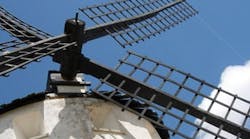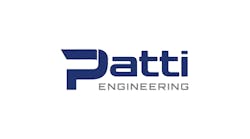By Harm Toren
At Iberdrola Renewables (www.iberdrolarenewables.us/), our National Control Center is professionally staffed 24/7/365, performing operations, energy management, scheduling and generation dispatch functions. This helps us to better manage risks and uncertainty while fulfilling energy requirements with sustainable and clean power. Originally called PPM Energy and part of Scottish Power, our company began operating in Oregon in 2001 with 12 employees. As of 2010, more than 850 workers throughout the United States maintain, develop, build and operate nearly 5000 megawatts of wind power and other power plants.
Our recent addition to the Iberdrola Renewables fleet is the National Control Center located in Portland, Ore., the nerve center of the Iberdrola Renewables generation portfolio. In a room that looks a little like NASA's Mission Control, our generation dispatchers and systems analysts oversee every turbine at every wind farm (and soon solar and biomass projects) throughout the country, around the clock. They monitor the performance and efficiency of every turbine. They keep an eye on approaching storms to warn technicians in the field to get to safety before harsh weather hits. They even have helped scientists conduct groundbreaking wildlife research. And they coordinate in real time with the nation's various transmission system operators to insure grid reliability to help keep the lights on.
The SCADA System
A vital element of our operation is our newly developed SCADA system, supplied by PcVue (www.pcvuesolutions.com) and integrated by the Iberdrola Renewables team. Among other things, each wind turbine has a control box containing a PLC, power converter, control boards and I/O device. Sensors for wind speed, wind direction, shaft rotation speed and numerous other factors collect and transfer data to the PLC. By detecting the wind's direction, the control system can use a motorized yaw gear to turn the entire wind turbine in the proper wind direction for maximum power generation. Our wind turbines are connected to a local area network (LAN) via a fiber-based, redundant ring connection. Although the turbines are designed to operate autonomously, they also are connected to a remote-control station running the control system that manages and collects data, adjusts turbine settings, and provides intelligent alarm, troubleshooting and reporting capabilities via our central data center and control facility in Portland.
The National Control Center connects via long-haul networks to the plant-based systems and ultimately to the individual turbines, substations, meteorological stations and avian radar surveillance systems. It provides visibility for our operators to manage the behavior of all the wind turbines and all the wind farms as a whole. By keeping a record of the activity on a time-interval basis, the SCADA allows our operators to determine what adjustments and corrective actions, if any, need to be taken. It records energy output, availability and error signals, and we are designing the ability to control (among other things) power factor, voltage and reactive power production, allowing for the management of wind farms' contributions to network voltage and frequency control. It also gives our operators the capability to manage power output based on real-time grid requirements.
The SCADA communicates with the turbines via a communications network that almost always uses optical fibers. We have multiple turbine types in our fleet and each turbine supplier provides its own control/HMI system. We have found that the major advantages of using PcVue as the main SCADA system is that it is turbine supplier-agnostic. It is not tied to any one PLC vendor, so that it can be free to provide data reporting and analysis formats irrespective of turbine type.
This was of particular importance to us because our wind farm operators use multiple turbine types and a myriad of various PLCs. In addition, our team really liked how PcVue was end-user friendly and easy to configure. Its ability to iconize animated mimics and use pop-up windows reduced the risk of overlaying crucial information and helped simplify the view for our team. The creation of templates for contents and behavior associated with each mimic and GUI (graphical user interface) animation, ensures consistency of the window display. We use multi-level access rights and menus associated with each user to ensure that navigation within the application is tailored to the needs and the permissions of each individual. This allows us to have a layer of security, traceability and control of users' actions.
Historically, when we had a small number of wind turbines transmitting into the grid, it was a relatively simple operations process. As renewable energy continues to contribute more and more to the grid, transmission and generation management become larger issues. Requirements are quite strict; thus, we have designed an integrated system with operator controls in order to manage the generation profile on a real-time basis. We are designing and building a scalable system to meet the next generation of renewable energy transformation. We are installing wind turbines to operate in harmony with other sources, such as nuclear power, solar, hydro and other energy in a netting arrangement to optimize performance.
In order to manage our growing business, we also have developed multi-point monitoring, fiber-optic networks and local systems on our wind farms in the United States that all tie into the National Control Center. We use a similar system in Toledo, Spain, called CORE (Centro de Operación de Energías Renovables, or Renewable Energies Operation Center). In each case, there is a central facility where the SCADA system is able to remotely access facilities throughout the country and access alarm and event conditions.
Our management of multi-station configurations uses PcVue's advanced tools to ensure the coherence of the configuration data and deployment on all of the stations, especially for all of our geographically remote applications. PcVue's centralized configuration provides the capabilities for the management and traceability of the various versions of applications and their changes. It also supports automatic updating of the stations that make up the supervisory system. At each start-up of a station on the network, PcVue automatically runs consistency checks of the versions in use.
In the United States, we are currently producing nearly 5000 megawatts of wind power from more than 40 independent power plants using about 2500 wind turbines. Each wind turbine supplies up to about 300 data points, which equates to approximately 700,000 to 850,000 I/O data points on several servers. To cope with the diverse demands of maintaining our wind farm, the PcVue application alarms are highly configurable. Alarm messages may be printed, viewed in alarm lists and archived. Our operators can configure alarm behavior using groups, filters, sorting, acknowledgement and masking. They also create alarm counters and associate specific actions with an alarm. Alarms can be acknowledged by our operators directly from mimics, and automatically broadcast to all nodes on the network.
Iberdrola Renewables also is using OPC (www.opcfoundation.org) and others as the communications protocol to pull data from the various PLCs. Many wind farm applications often use OPC and the KEPServerEX driver from Kepware (www.kepware.com) to communicate seamlessly with disparate systems. We use PcVue's OPC Data Access Client and OPC DA XML Client for exchange of real-time data with communication servers, and OPC DA Server to facilitate data exchange with third-party applications.
The data acquisition that occurs is routed back to the National Control Center. I manage the teams developing integrated control systems at the National Control Center. We chose PcVue's software, as it had already proven itself to be scaleable, user-friendly and highly functional in the Spanish operations. PcVue provides a single-user view that allows an easy visual display and overall management of the myriad systems in place from the PLCs, HMIs and the control systems equipped on the turbines. As we monitor avian migration and weather in addition to controlling and managing our turbines, we needed a system that would provide a simple, easy-to-read GUI, so that we can react at a moment's notice.
The new PcVue SCADA software integrates and connects with the wind turbines via the PcVue GUI interface acting as a light client to the PcVue application and managing up to 2.5 million data elements. This configuration provides our operators with the necessary information about the turbine signals. We are using this distributed, client-server architecture with redundancy in order to ensure that the design is fault-tolerant. Using PcVue's built-in redundancy features, we are able to ensure continuity of data collection in the event of the failure of a system component. PcVue also supports dual networks both for communication with field equipment and among PcVue stations. Each component and each station in the configuration has a validity status to enable operators to view the condition of the system in real time. These client stations are communicating via OPC with the redundant communication front ends connected to the high-speed network.
Two-Level Architecture
Using the PcVue architecture, our operators can see in-depth details on the data of the remote wind farms in a real-time display status. Given the large volume of information, and in order to facilitate operation and maintenance of the facilities, the supervision appears in two levels.
A first supervision level gives us an overview of the most relevant alarms, values and counters, enough to supervise the turbines in a usual situation and detect failures that need to be corrected. A second, detailed supervision level, triggered on an operator's request, enables supervision of all of the turbine's data selected, so that our operators can immediately and accurately diagnose failures that occurred and determine the necessary operations. Data received can be processed as setpoints, historical storages, alarm management, trending, etc.
Our control system in each installation collects the operational information from the generators, associated substation and other components. The control system is connected to the control center through a remote communication channel, and, therefore, facilitates maintenance tasks. Our National Control Center receives this information and processes it into an organized and simplified structure that enables easy identification and diagnosis of failures. This diagnosis triggers the appropriate actions for its solution: remote reset or activation of local maintenance teams. As a result, average downtime decreases, thus increasing availability. Our operators can see in-depth data from the remote wind farms.
Iberdrola Renewables in the United States continues to expand the systems for both legacy and new generating stations, and, so far, it has met our expectations, and the system is working very well. This will become the standard process for all later facilities, so that it becomes our typical "out-of-the-box" solution.
Harm Toren is managing director of Operations Services/Wind Operations for Iberdrola Renewables in Portland, Ore.



